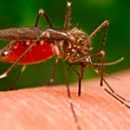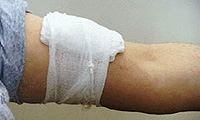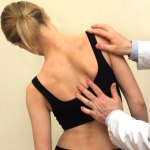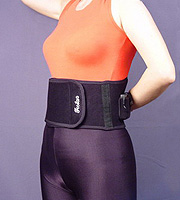What is an intervertebral hernia? What are current treatments? Answers you will find in the article.
Content
Intervertebral hernia is
Displacement of a part of a deformed intervertebral disk. The most common
Localization of hernia - Lumbar Spinal Department.
Most often
This disease occurs aged from 20 to 50 years and are one
Of the most frequent causes of temporary disability and often
Disabled patient.
The hernia of intervertebral discs are a heavy complication of the osteochondrosis of the spine.
Disease
arises as a result of the gap of the intervertebral disk. Formed by
this hernia, pulling back and to the side, presses on the root nerve
At the place of its exit from the spinal channel and causes inflammation,
accompanied by edema. This explains why pain and loss
sensitivity appear not immediately after the start of the disease.
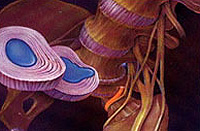
Painted
Nerva's root sends pain impulses in the brain, which
perceived by man as pain in the area, sensitivity
which is ensured by this nerve. Also in this area violated
Coordination of movements and muscular power.
Basic
A complaint is pain. As a rule, pain occurs after moderate
physical exertion, uncomfortable position in the workplace or
in bed, with a slope with a simultaneous turn to the side, often
in combination with lifting severity. Then the pain appears during the day
and weakness in the field of innervation. When driving, cough, sneezing or
Painting pain intensify and often become so strong that
man needs bed.
With a disk hernia
In the lumbar pain, pain is more often carrying
(apply to the outer surface of the foot), can be permanent
or transient.
Besides, a violation can be determined
Sensitivity, such as hyptestesia (loss of sensitivity)
and anesthesia (no sensitivity), rarely - hyperesthesia
(sensitivity gain).
Vegetative is observed
Disorders in the form of a decrease in skin temperature, unlocking edema
(Pastoznosti), fastening changes, dry skin dryness.
Sometimes patients can not straighten the leg due to pain. May be celebrated
Neurotrophic disorders of the affected area in the form of weight loss
(at the expense of muscle atrophy).
The diagnosis is set
Neurologist or neurosurgeon in the presence of described symptoms. For his
The following methods are used: computed tomography,
Spondylography, radiography.
Treatment of intervertebral grozhi
Usually this
The disease passes in 2-3 months when complying with beddown
and peace - the best prerequisites for rapid recovery without complications.
Just as with other lumbar diseases
spine, it is recommended to lie on the back with raised or laid
on the pillow legs, changing body position and finding a comfortable painless
Pose.
For the weakening of strong pain, the reception of painful
and anti-inflammatory drugs. After 3-4 weeks of pain,
As a rule, significantly weaken, but the damage itself is still
not cured, so in order to avoid possible complications in the form
Chronic backs in the lower back need peace for a whole
month. The operation is shown in the presence of pain resistant, or
With pronounced motor disorders.
Another treatment method
Intervertebral hernia in the acute stage - the stretch of the spine. This is
A very old way to whom in recent times
Again increases. Pressure is created by extracting
in the intervertebral space, which leads to the return of the proclaimed
disk parts to start. At the same time it is necessary to find the right
impact direction and choose the appropriate force to
Do not damage the spine to an even greater degree. With the right
Procedure pain should decrease, and not grow.
After
acute period of illness to strengthen the weakened muscles of the back
and return to the spine of ordinary mobility should start classes
Medical gymnastics. More rapid and complete recovery
promotes massage.
Sometimes reduced sensitivity in some
Places of foot and the feeling of weakness in it is observed and after disappearance
Pole. This is due to the fact that the damaged root of the nerve is still
did not restore its functions. The volume of movements is usually,
It remains normal.


